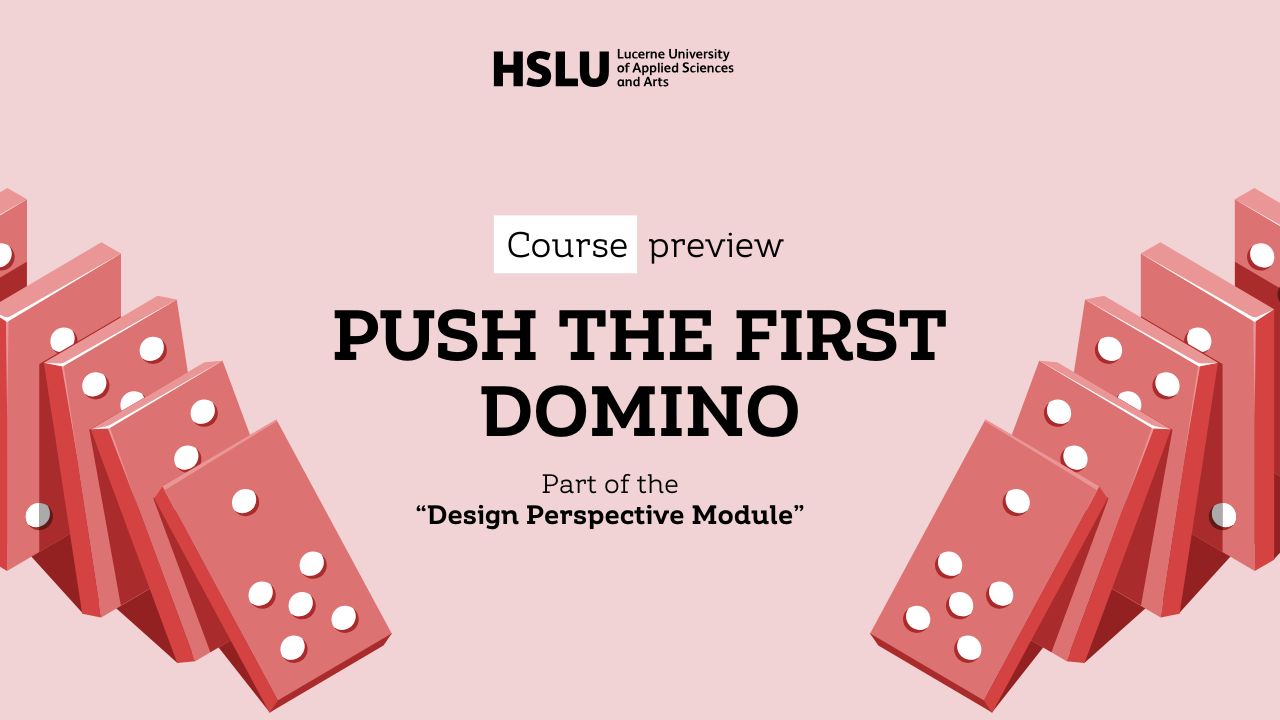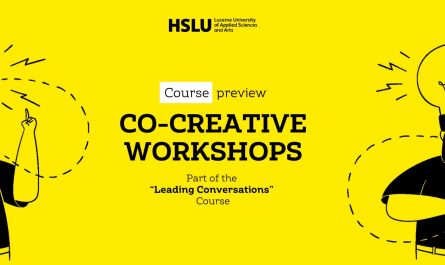I was invited by Bianca Herlo, a Professor for Eco-Social Design at the Master Design of the HSLU, Lucerne University of Applied Sciences and Arts, to share my personal Design approach in the module Design Perpective that Bianca organizes.
In this short article I want to share with you the slide deck I’ve used to run the session and a few additional insights from that morning.
What is this “Design Perspective” module?
Every other Wednesday, from 09:30 to 14:30 first year students of all the Master Design specializations, including Service Design get the chance to meet a designer or a researcher in a more in depth way. These sessions are made so that learners can discover the very diverse perspectives that professionals take in their work and what is important for them.
Slides
The perspective: push a domino
If there was one idea to play with from the slides it’s this:
When a thing in life is too complex, overwhelming and scary we can move a first domino to create a sense of progress.
Here two of my favorite ways to move a domino in a difficult project:
- Start with the last domino: make a prototype of the possible formats the end result could take and get clarity on what you are aiming for.
- Start with a social domino: reach out to somebody with a question, a proposition or a promise. You are now in a lovely social contract that will push you forward.
What’s magic about moving the first domino is that it plays with the Endowed Progress Effect. When we feel we’re making progress we’re even more motivated to make some more progress.
Moving the first domino is so not so much about the result of that action but about creating a sense of progress that then creates a virtuous loop of motivation and progress.
More Service Design perspectives
Does this idea sum up my complete perspective of what it means to be a designer today? Absolutely not. It’s just one that I felt would be helpful at this particular time for the learners.
If you are hungry for more, a few years ago I wrote a tiny and free online course about a few mindsets or perspectives that to me make a great Service Design practitioner.
Here an overview of those additional perspectives:
- Service designers focus on a human-centered approach
- They believe everyone is a user
- They are not the experts, others are
- They believe perception is key
- Service designers love to make shit happen
- They prototype instead of talking
- They love to fail
- They go from low fidelity to high fidelity
- Service designers are lazy
- They steal and adapt tools from smarter people
- They look for lazy solutions
- They repackage older ideas
- They love simple solutions
- Service designers don’t think in terms of silos but in journeys
- They believe services are like icebergs
- They think in journeys
- They aren’t focused on just one company
- Service designers deal with uncertainty
- They accept that they are weak
- They understand the phases of a design project
- They separate divergent from convergent thinking
- They know that innovation is a mess
- They know that change needs many steps
- They make step-by-step decisions
- They summarize what they learn
- They verify what they have learned from different angles
What happened in the course
Here is how I structured this one morning course:
- Story time: Pecha kucha presentation where I shared a bit of background about who I am that helps learners better understand where my perspective comes from
- Input: One perspective: a short 10 minute talk about the « push the first domino » perspective
- Practice: learners got 45 minutes to move a meangiful domino that is part of something scary, daunting or overwhelming to them.
- Q&A: questions from learners are answered in a participative way where I and all other learners could share their perspective on the question
Why did I design the session like this?
Does this idea sum up my complete perspective of what it means to be a designer today? Absolutely not.
But instead of doing a long lecture about my approach I wanted to motivate the learners of the Master Design to get some unexpected time to make progress on something that they are afraid of or procrastinating on.
And instead of deciding what parts of my experience matters most to them, I instead asked students to share their questions about my perspective.



